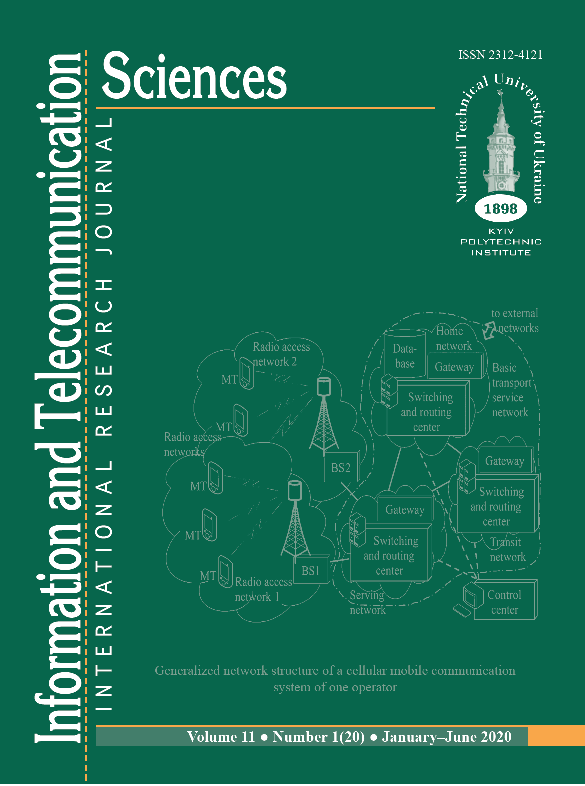COMPUTER-AIDED WORKFLOW DESIGNING FOR QOS CONTROL BASED ON ONTOLOGY
DOI:
https://doi.org/10.20535/2411-2976.12020.5-10Keywords:
workflow, ontology, orchestrator, computer-aided design, microservices, Quality of Service, telecommunicationAbstract
Background. The rapid development of technologies in various fields of business, including in telecommunications requires an increasing level of service provision, because the formation of a market for network communication services has increased attention to issues of quality control, both by regulators and by the providers themselves. In order to meet a given
level of quality of service, telecommunication operators develop algorithms and solutions for providing quality control services based on various criteria. However, these solutions are not universal for different types of indicators (quantitative, qualitative, etc.) of quality of service.
Objective. The paper presents the approach to automating workflows and their components (functional services, connections and rules of interaction) by designing processes based on computer-aided generation of both a set of services that are components of workflows and the sequence of their execution using ontologies. Ontology serves as meta-model of the workflow, services, subject domain and logical rules that establish relationships between functional services.
Methods. The implementation of the proposed approach was realized using an ontological modeling, workflow modeling standards and methods of computer-aided designing.
Results. An ontological model of service quality indicators was developed, as well as dynamically changing workflow that guarantees the quality of service control universality was designed. For computer-aided workflows generation the
software environment has been developed, the performance of which is tested on the example of workflow designing tool IT TODOS for developing and modifying ontologies and generating workflow scheme using BPMN.
Conclusions. The proposed approach makes the process of quality of service control more transparent and reduces the involvement of analysts in this process. Such an approach is flexible and universal for usage in any subject domain by uploading relevant data to the registers. It also provides the process of the quality of service control automation and the solution encapsulation enabling employees to use the solution provided at any level without the expert analyst involvement.
References
Internet penetration in Ukraine [Electronic resources]. – 2019. – Type
of resource access:
https://inau.ua/sites/default/files/file/1910/dani_ustanovchyh_doslidzh
en_iii_kvartal_2019_roku.pdf.
S. M. Embury, S. M. Brandt, J. S.Robinson, I. Sutherland, F. A.
Bisby, W. A. Gray, A. C. Jones, and R. J. White, in Information
Systems, 26(8), pp. 657–689, 2001.
M. Skulysh, O. Romanov, L. Globa, I. Husyeva, “Managing the
Process of Servicing Hybrid Telecommunications Services. Quality
Control and Interaction Procedure of Service Subsystems”, in
Advances in Soft and Hard Computing, 2019, doi: 10.1007/978-3-
-03314-9_22.
K.-P. Eckert, Y. Glickman, J. Hall, R. Knapik, R. Renk, T.-F. Fortiş,
A. Cicortas, “Workflow technologies for a virtual ISP” in Exploiting
the knowledge economy. Vol.2 : Issues, applications and case studies,
pp. 1631–1638, 2006.
J. G. Hayes, E. Peyrovian, S. Sarin, M.-T. Schmidt, K. D. Swenson,
R. Weber, “Workflow interoperability standards for the Internet” in
Internet Computing, IEEE. 4., pp. 37–45, 2000, doi:
1109/4236.845389
G. Budin, “Ontology-driven translation management”, Knowledge
Systems and Translation, 2005, doi: 10.1515/9783110924305.103.
D. Oberle, “How ontologies benefit enterprise applications”, in
Semantic Web, 5 (6), 2014, pp. 473–491, doi:10.3233/SW-130114.
S. I. Antonov, S. G. Redko, “Automation of Unstructured Data
Management within the Enterprise Content Management System”, in
Scientific and technical statements of SPbSPU, №5, pp. 277–282,
M. A. Popova, “A model of the ontological interface of aggregation
of information resources and means of GIS”, in International Journal
“Information Technologies and Knowledge”, Vol. 7, Number 4, pр.
–370, 2013.
V. Velichko, M. Popova, V. Prychodniuk, and O. Stryzhak, “TODOS
- IT-platform for the formation of transdisciplinary informational
environments,” Armament Mil. Equip. Syst., vol. 1, no. 49, pp. 10–
, 2017.

